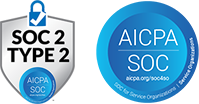What Is Employee Resource Group (ERG)?
An Employee Resource Group (ERG) is a voluntary, employee-led network formed around shared characteristics—such as gender, ethnicity, veteran status, or life stage—or common interests. ERGs advance inclusion by providing support, advocacy, and development opportunities. They operate under formal charters endorsed by leadership and often partner with Human Resources and business units to drive cultural, talent, and business objectives.
Why Employee Resource Group (ERG) Matters
ERGs empower employees to build community, develop leadership skills, and amplify under-represented voices. They foster belonging, boost engagement, and surface insights on diverse needs—helping organizations improve recruitment, retention, and innovation. By bridging employee perspectives and strategy, ERGs contribute to a more inclusive culture and drive measurable business impact.
Where Employee Resource Group (ERG) Is Used
Employee Resource Groups flourish across industries and functions:
- Talent Attraction: ERG ambassadors engage at career fairs and partner with recruiters to reach diverse candidates.
- Onboarding & Mentorship: New hires connect with ERG mentors who guide them through culture, career paths, and networks.
- Product & Market Strategy: ERGs advise on culturally relevant marketing campaigns, product features, and customer experiences.
- Leadership Development: ERG volunteers gain project-management and sponsorship opportunities to enhance their leadership portfolios.
- Community Engagement: ERGs organize volunteer and outreach events—strengthening employer brand and local partnerships.
Employee Resource Group (ERG) Key Benefits
- Inclusion & Belonging: ERGs create safe spaces where members can share experiences and feel accepted.
- Talent Development: Participants hone leadership, event planning, and communication skills through ERG roles.
- Business Insight: ERGs surface market and cultural insights that inform product design and customer engagement.
- Recruitment Advantage: Active ERGs enhance employer brand—attracting candidates who value inclusive workplaces.
- Employee Engagement: Involvement in ERGs correlates with higher satisfaction, lower turnover, and stronger morale.
Best Practices & Examples
- Four Pillars of ERG Success:
- Executive Sponsorship: Secure a senior leader to champion the ERG and allocate resources.
- Strategic Alignment: Tie ERG objectives to business goals—such as hiring targets or market expansion.
- Member Development: Offer training and stretch assignments to ERG leaders for professional growth.
- Impact Measurement: Track metrics like membership growth, event feedback, and business outcomes (e.g., referral hires).
- Recruitment Integration: Leverage ERG networks in hiring by hosting “employee panels” for candidates and showcasing ERG success stories in job postings.
- Cross-ERG Collaboration: Coordinate intersectional events—such as a Women in Tech and LGBTQ+ ERG hackathon—to foster allyship and broaden reach.
- Resource Provisioning: Provide ERGs with modest budgets, meeting spaces, and communication channels to amplify their voice and initiatives.
Conclusion
Employee Resource Groups are catalysts for inclusive culture, leadership development, and business innovation. By formalizing ERG charters, securing executive sponsorship, and aligning initiatives with strategic goals, organizations harness the collective power of diverse employees—driving engagement, enriching talent pipelines, and unlocking new market insights.
Employee Resource Group (ERG) FAQs
Q: What is an ERG for employees?
An ERG for employees is a voluntary, company-sponsored network where staff with shared identities or interests connect, support each other, and collaborate on professional development, cultural events, and business-impact projects.
Q: What is an ERG in recruitment?
In recruitment, ERGs partner with talent-acquisition teams by attending career events, hosting candidate Q&As, and promoting job openings within their communities—enhancing outreach to diverse talent pools.
Q: What are the four pillars of ERG?
The four pillars are: (1) Executive Sponsorship to secure leadership buy-in; (2) Strategic Alignment with business objectives; (3) Member Development through training and mentoring; (4) Impact Measurement via metrics on engagement and business outcomes.
Q: What company is ERG?
“ERG” also refers to Électricité de France’s subsidiary ERG Power & Gas, but in HR contexts ERG stands for Employee Resource Group—employee-led inclusion networks in organizations worldwide.




